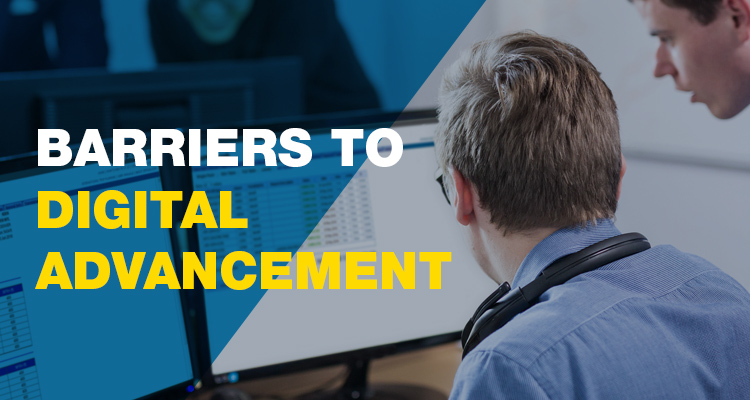
How Airlines Can Overcome Barriers To Digital Advancement
In this industry, transitioning to new technologies is always going to take time, but the upside is that airlines can easily begin reaping benefits immediately. Here are some strategies to ensure that progress doesn’t have to be painful.
Select solutions that integrate
Digital advancement happens one step at a time. Although some technology interdependencies are such that implementing one upgrade necessitates another, chances are an airline will retain the vast majority of their systems. Airlines have invested a lot of time and research into existing technology, including company-owned SDKs, so it’s important that any new or upgraded systems they select will integrate with what they already have. Integrations ensure the automatic sharing of data between systems and applications, and negate the need to manually input information. The result is decreased heads-down time and human error, as well as less need for training across technologies.
Why build when you can buy?
Rather than investing heavily in a digital team to create new technologies, airlines can draw on technologies that are already available, and have features that reflect industry best practice. Doing so will save companies money, time and headaches—not to mention, again, training needs; there’s a good chance some employees will already be familiar with at least previous iterations of a given technology from different point of their careers. It’s also worth noting that the upfront internal investment in new technology only scratches the surface; teams must continually monitor that technology and make improvements. Removing the need for day-to-day quality assurance will free up time and resources for airlines to more strategically scale their technology investment, and amplify these efforts across the organization. There’s no need to reinvent the wheel.
Vendors are partners
When shopping for new technology, it’s important for airlines to look for vendors who think in terms of services, rather than products. With so much at stake, airlines need to work with companies that will work with them shoulder-to-shoulder, tailor solutions to their unique needs, proactively administer training resources, and provide on-demand support. It doesn’t matter how innovative the technology—if the vendor isn’t committed to serving the customers’ needs and success above all else, they’re not worth working with.
Always have a backup plan
While technology is critical to progress, it’s also not immune to the occasional error. That’s why it’s so important to select technologies that offer integrated backup solutions to help reduce operational risk. Built-in redundancies, cloud storage, device-to-device sync that provide access to necessary information between team members, and the ability to download and access documents in the event data connectivity is unavailable all help safeguard airlines and ensure that even if technology goes off track, operations won’t.
Interested in learning about your airline can seamlessly transition to new technology? Fill out our form to receive the latest information.
Fill out my online form.
In this industry, transitioning to new technologies is always going to take time, but the upside is that airlines can easily begin reaping benefits immediately. Here are some strategies to ensure that progress doesn’t have to be painful.
Select solutions that integrate
Digital advancement happens one step at a time. Although some technology interdependencies are such that implementing one upgrade necessitates another, chances are an airline will retain the vast majority of their systems. Airlines have invested a lot of time and research into existing technology, including company-owned SDKs, so it’s important that any new or upgraded systems they select will integrate with what they already have. Integrations ensure the automatic sharing of data between systems and applications, and negate the need to manually input information. The result is decreased heads-down time and human error, as well as less need for training across technologies.
Why build when you can buy?
Rather than investing heavily in a digital team to create new technologies, airlines can draw on technologies that are already available, and have features that reflect industry best practice. Doing so will save companies money, time and headaches—not to mention, again, training needs; there’s a good chance some employees will already be familiar with at least previous iterations of a given technology from different point of their careers. It’s also worth noting that the upfront internal investment in new technology only scratches the surface; teams must continually monitor that technology and make improvements. Removing the need for day-to-day quality assurance will free up time and resources for airlines to more strategically scale their technology investment, and amplify these efforts across the organization. There’s no need to reinvent the wheel.
Vendors are partners
When shopping for new technology, it’s important for airlines to look for vendors who think in terms of services, rather than products. With so much at stake, airlines need to work with companies that will work with them shoulder-to-shoulder, tailor solutions to their unique needs, proactively administer training resources, and provide on-demand support. It doesn’t matter how innovative the technology—if the vendor isn’t committed to serving the customers’ needs and success above all else, they’re not worth working with.
Always have a backup plan
While technology is critical to progress, it’s also not immune to the occasional error. That’s why it’s so important to select technologies that offer integrated backup solutions to help reduce operational risk. Built-in redundancies, cloud storage, device-to-device sync that provide access to necessary information between team members, and the ability to download and access documents in the event data connectivity is unavailable all help safeguard airlines and ensure that even if technology goes off track, operations won’t.
Interested in learning about your airline can seamlessly transition to new technology? Fill out our form to receive the latest information.